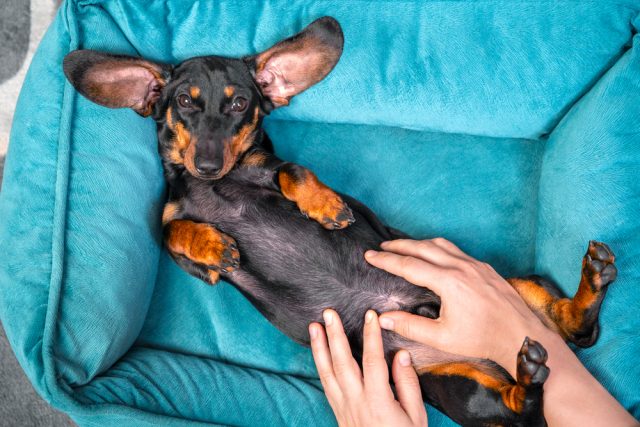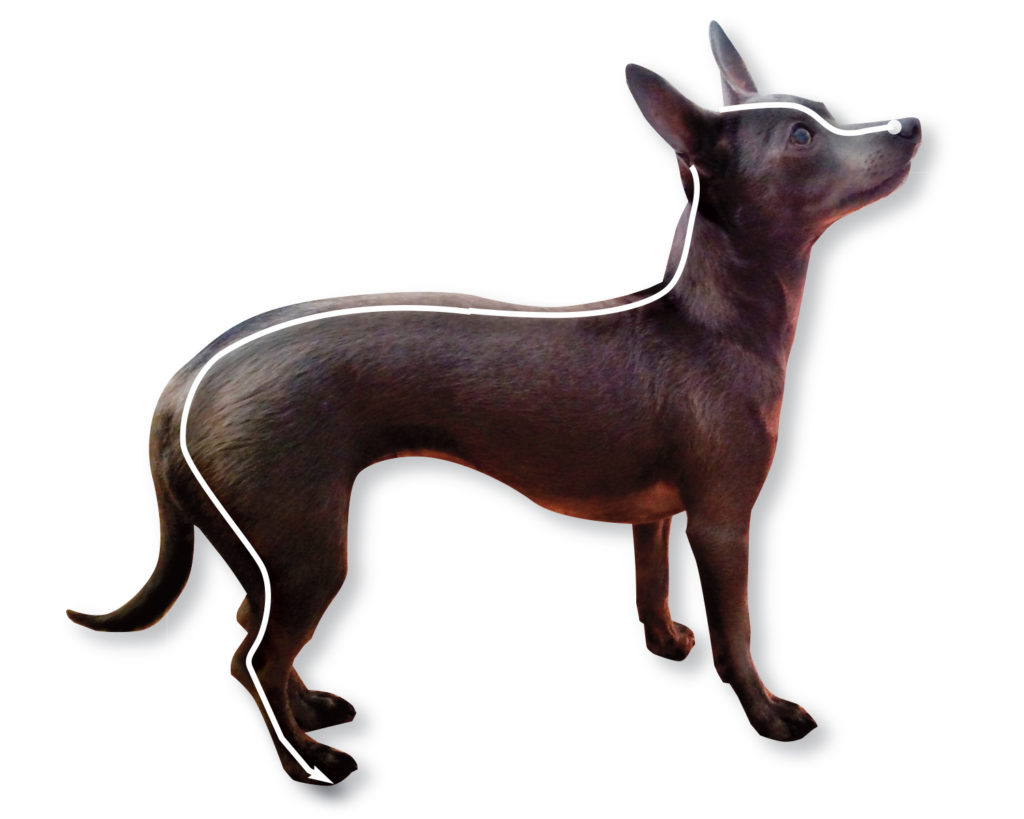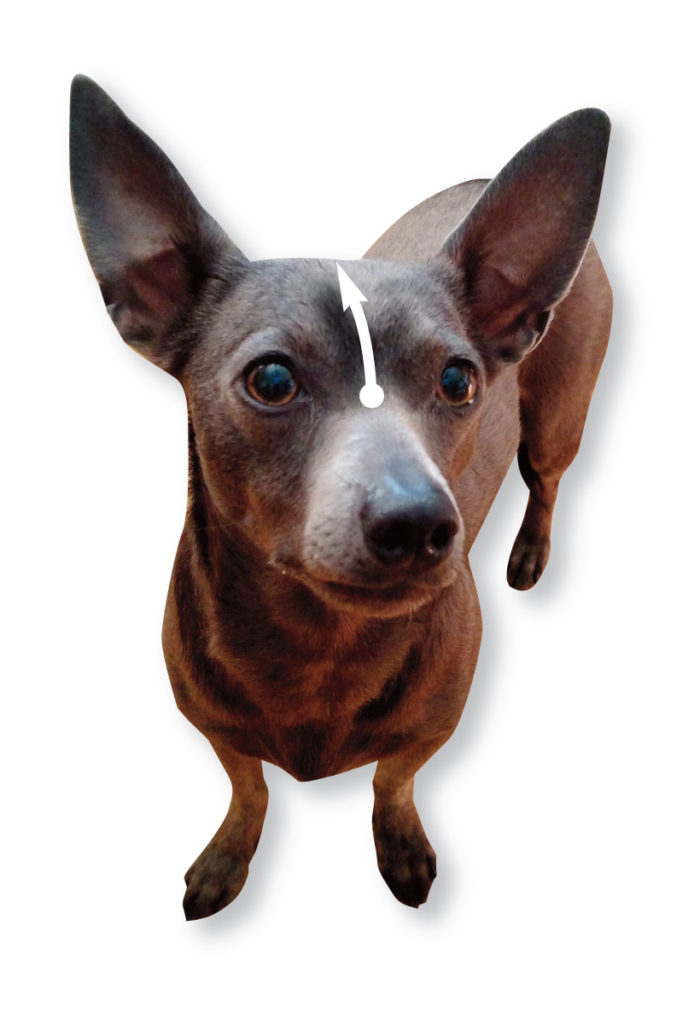Canine massage is beneficial for so many reasons – no matter if your dog is a couch potato or the next agility master. And while it is a skill that requires schooling to do masterfully, there are a few techniques that dog owners can learn at home to benefit their dog’s health and well-being.
“Massage has numerous benefits for both you and your dog,” Katie Mehrtens, owner of The Right Spot Pet Massage, told iHeartDogs. “Making massage a part of a regular routine will enrich your relationship with your dog – it is a bonding experience and wonderful form of communication. Massage is a valuable tool to help you, the parent, detect changes in your dog’s physical and/or emotional state earlier before something could develop into a bigger problem. Another benefit is that massage is a wonderful preventative tool as your pet ages. Not so surprising is that massage helps with anxiety. As the physical body relaxes, so does the nervous system.”

Mehrtens is a Certified Animal Massage Therapist and treats all breeds and sizes of dogs, cats, and other small animals. She explained that massage is not simply “petting your dog”:
Massage is not simply petting. When you are massaging your dog, set your intention in your mind and focus on what you are doing and feeling.
How To Massage Your Dog
We asked Mehrten to explain how dog owners can massage their canine companions correctly in their own homes. Please note that this is not meant to be a replacement for veterinary care or as a treatment. If your dog is showing signs of pain, discomfort, or illness, take him to see his vet.
The following are her instructions:
Step 1 – Getting your dog used to massage
To begin, find a comfortable, quiet spot, make sure you feel relaxed and use a quiet, calm voice. Watch your dog’s reaction to touch – his reaction is a signal of how the massage is affecting him. If your dog gets up and leaves or gives you another indicator that he does not like this, try again later. Don’t push your dog. Dogs, like humans, may not feel comfortable with massage at first.
Step 2 – The strokes
With massage, strokes that appear to be simple are often the most effective approaches. Use a gentle but firm touch. Try to keep your strokes slow and even to relax your dog.
To begin a massage, start on one side of the body, begin at the nose, and using an open flat hand, go from the nose all the way down to the bottom of the foot. Stay about 1” – 2” away from the spine. Repeat this three times and then do the same on the other side.

This simple stroke can relax and prepare the entire body for massage.
As a continuation, using the same open flat hand, stroke down each side of the body.
Begin under the jaw and down the neck. Follow this by going down the front legs all the way to the paw. Gently squeeze the front leg and “toes” for a bit more relaxation.

Continue by gently going down the ribcage, helping to relax all the muscles between the ribs that help us breathe.
When done with the ribcage, continue down the back and the legs. Apply gentle, firm pressure to the outer leg and all the way down. Again, gently squeeze the lower leg and “toes.”
Apply gentle compressions to the larger muscle groups, such as the shoulder and thighs. Place your open hand on these large muscle groups and gently press and release, like a slow heartbeat. This gentle compression gets blood and other fluids moving in and out of these large muscle groups.
In times of high stress or anxiety, a wonderful way to calm your dog is to gently rub his face starting between the eyes where the snout meets the face back to the middle of his head. Gently rub the ears, starting at the head and working your way down. Do this slowly, reassuring him quietly for a few minutes until he calms down. If he does not calm down or he gets more excited, stop the process.

Interested in learning more?
If you want to take classes to learn more about how to properly massage your pet, there are schools that offer classes for pet parents. Some even have online programs like allaboutanimalmassage.com. Mehrtens said. In addition, many professional pet massage therapists teach classes for pet parents. Lastly, there are videos and books on animal massage that you can find at your local bookstore or online.

